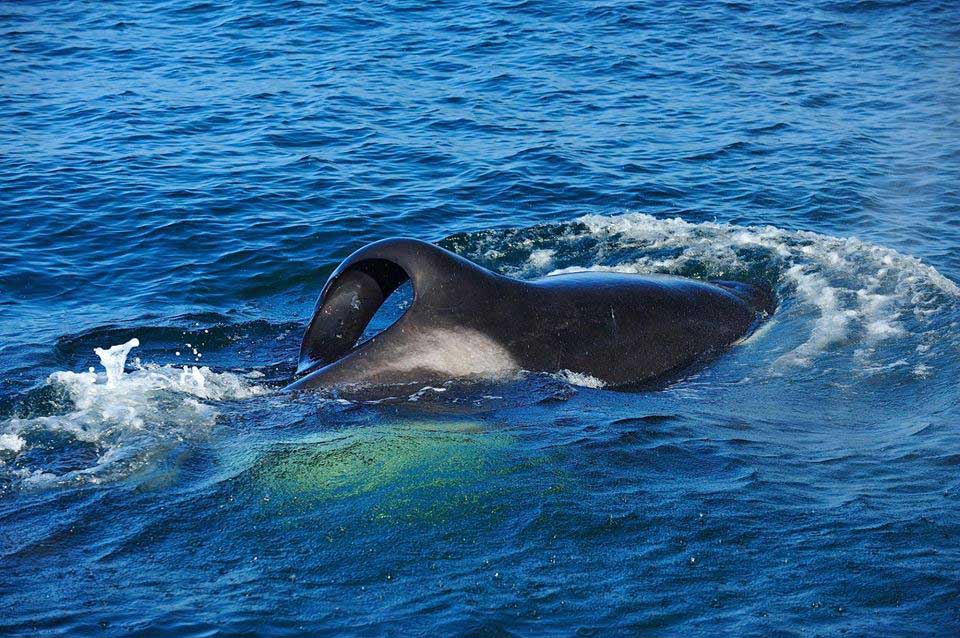A new group of killer whales has moved to South Africa – and they have an appetite for sharks!
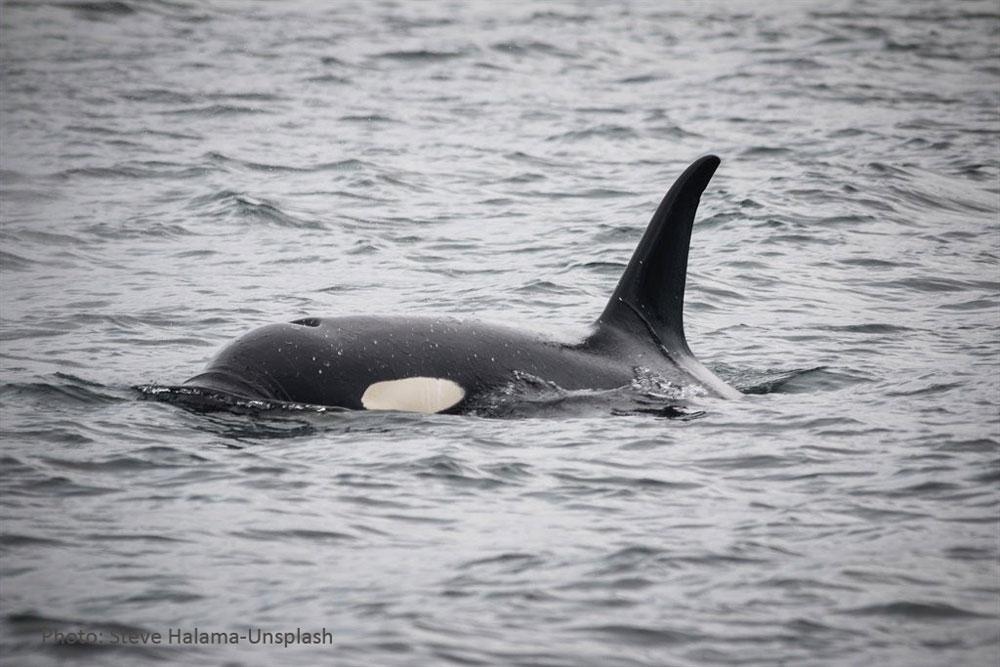
There has been a dramatic decline in great white shark sightings in False Bay, Cape Town, and it looks like shark-eating killer whales could be to blame.
"These killer whales have moved to Cape waters seeking fresh hunting grounds following declines in prey species in other parts of the world", writes Dr Alison Kock, a marine biologist from the Cape Research Centre at the University of Cape Town, in The Conversation.
Scuba divers found several dead sevengill sharks at a popular dive site inside the marine protected Table Mountain National Park. This site was home to an exceptionally large group of sevengill sharks. Divers could dive with up to 70 sharks on a single hour-long dive – no other place in the world had this many broadnose sevengill sharks in one place.
Initially, the cause of death remained a mystery because no dead sharks were recovered for examination. Fingers were pointed to humans, great white sharks or killer whales. The research confirmed the latter to be the villains. According to Dr Kock, this was unheard-of behaviour.
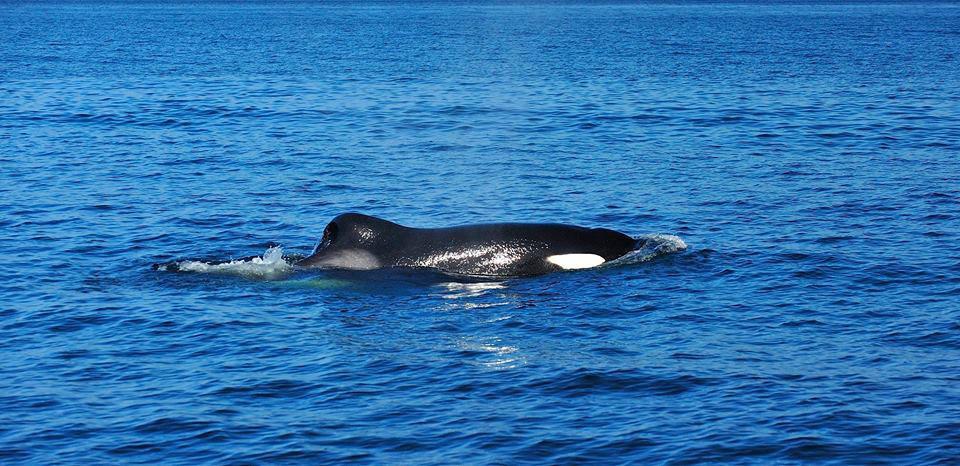
These super predators, first spotted in False bay just a decade ago in, previously stuck to predating on marine mammals like seals. However, Killer Whales are capable of adapting their behaviour (both social and hunting) to prey species availability.
"Two killer whales, nicknamed “Port” and “Starboard”, were sighted near the sevengill aggregation site at the time of both incidents in 2015 and 2016. In 2017, it is suspected that these same two killer whales were also responsible for the death of five great white sharks further up the coast in Gansbaai"., according to Dr Koch.
Kock and other scientists now speculate that a new sub-group of killer whales, who specialise in shark hunting, have arrived in SA to feast.
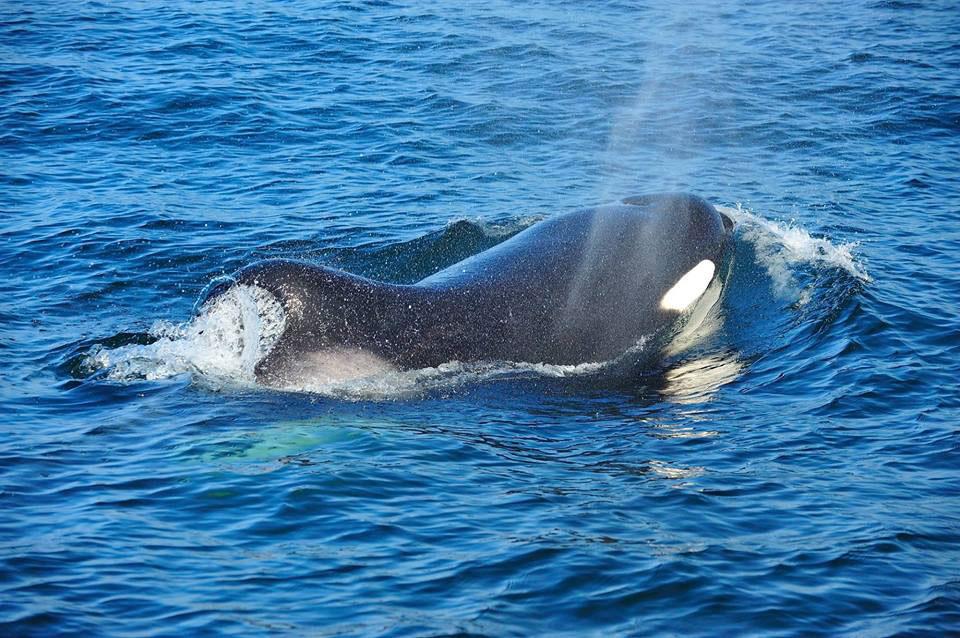
“Evidence from our literature review points to the arrival of a different killer whale, one which targets sharks. Typically, it used to occur offshore. But that seems to have changed.”
Port & Starboard have now discovered Seal Island in False Bay!
Sunday 26 May 2019
The pair of killer whales that have been documented as frequenting the waters off the South African coast and hunting white and cow sharks in a specialised manner were spotted off False Bay’s Seal Island this weekend, reported Simon's Town Boat Company
"They’ve been seen close to the Island before, but they showed little interest in surveying the area for a potential meal & always moved straight inshore. Presumably, this is because they were aware that Seal Island in the past didn’t have a high aggregation of cow sharks."
But when food is scarce, research shows that killer whales can adapt.

With the desertion of the white sharks, cow sharks have relocated to seal island after being displaced from their regular localities due to increased orca predations on them.
And the orcas certainly had a feast on this last weekend in May. An estimated 10 cow sharks were consumed during the 5+ hours that Port & Starboard worked the area.
To give a bit of background
by scientists Sally Sivewright
"There are a number of theories as to why this pair hunts the way that they do.
It could be due to age...one of the theories as to why the dorsal fins of male killer whales collapse is due to age; the structure of the dorsal fin, which never stops growing and can reach a staggering 2 m, becomes weak as the animal gets older and bends, rolls or totally collapses."
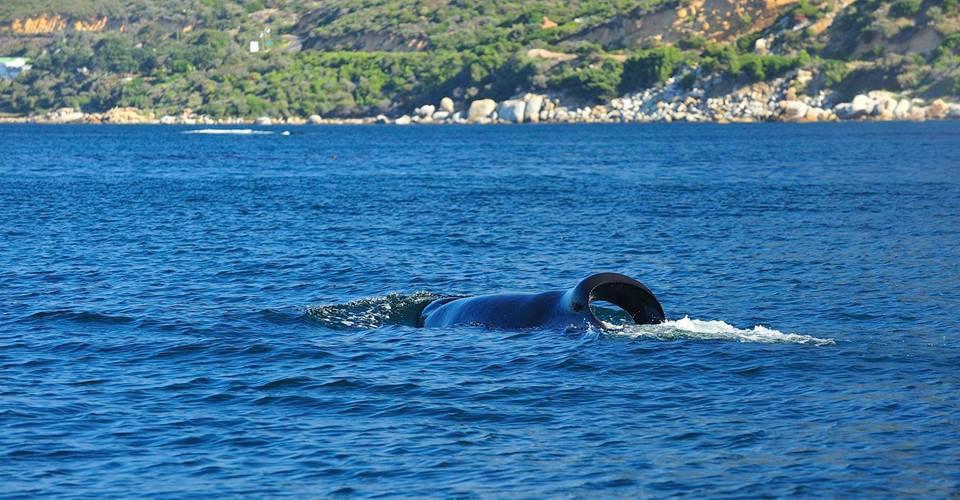
"The dorsal fins of both Port and Starboard are collapsed, hence their names, and so they could be old males. It might, therefore, be easier for the pair to ambush a slower moving cow shark than to chase a pod of fast-moving common dolphins across the bay.
The manner in which they hunt, targeting the nutrient-rich livers of their prey, is efficient...they would use up more energy eating the rest of the animal than they would gain from it.
Despite this generally eclectic diet, at least some populations feed on a narrow range of prey and, three ecotypes of Killer Whales have been described, each of these specializes in a narrow range of prey."
Resident Killer Whales feed exclusively on squid and fishes (primarily salmon), Transient Killer Whales feed mainly on marine mammals (pinnipeds and cetaceans) and Offshore Killer Whales feed largely on bony and cartilaginous fishes.
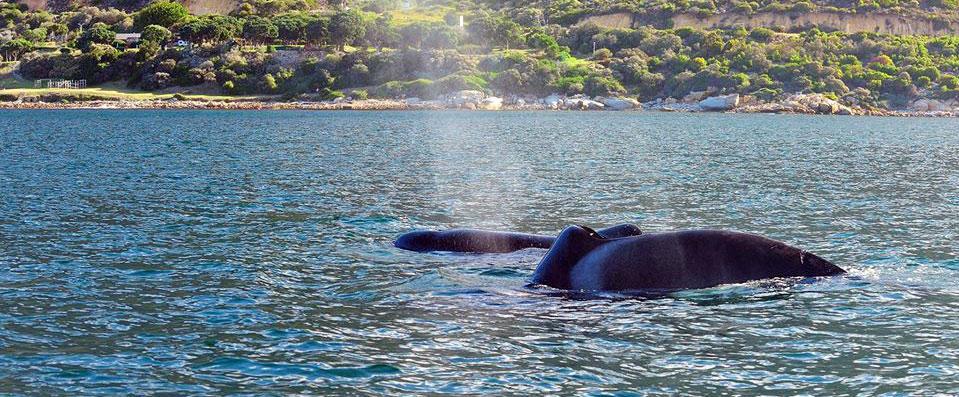
The flat-toothed type recently described in South African waters, however, may have tooth-wear likely caused by predating on cartilaginous fishes similar to in the northeast Pacific Offshores.
Port and Starboard update
Monday 27 May 2019
Sea Search: Scientist unknown
"Eventually, our efforts with building a killer whale sightings network came to fruition and thanks to a call from Alison Kock and a lift from Dave Hurwitz from Simon's Town Boat Company we managed to get out to Seal Island False Bay in time to catch Port and Starboard in action.
We spent about 3 hours observing the animals just NE of the island where they were doing a lot of long-dives in the same area suggesting searching/feeding behaviour near the bottom.
They had been at the island from day break so spent about 5 hours in the area in total. Although we weren't lucky enough to see any direct predations ourselves, they were reported with a shark in the mouth very early on, then at least 7 or 8 oil slicks seen in the presence of the animals, clearly suggesting predation on sharks and removal of the liver.
Although the evidence of shark-predation was circumstantial for several years, I think we are all fairly convinced now that these two animals are definitely eating sharks.
An unusual specialisation, given also their bent dorsal fins and close social ties, and the general mammal-focused diet of most killer whales around SA.
We hope to be able to take a closer look at all the details of these sightings in the near future and shed some more light on the situation."
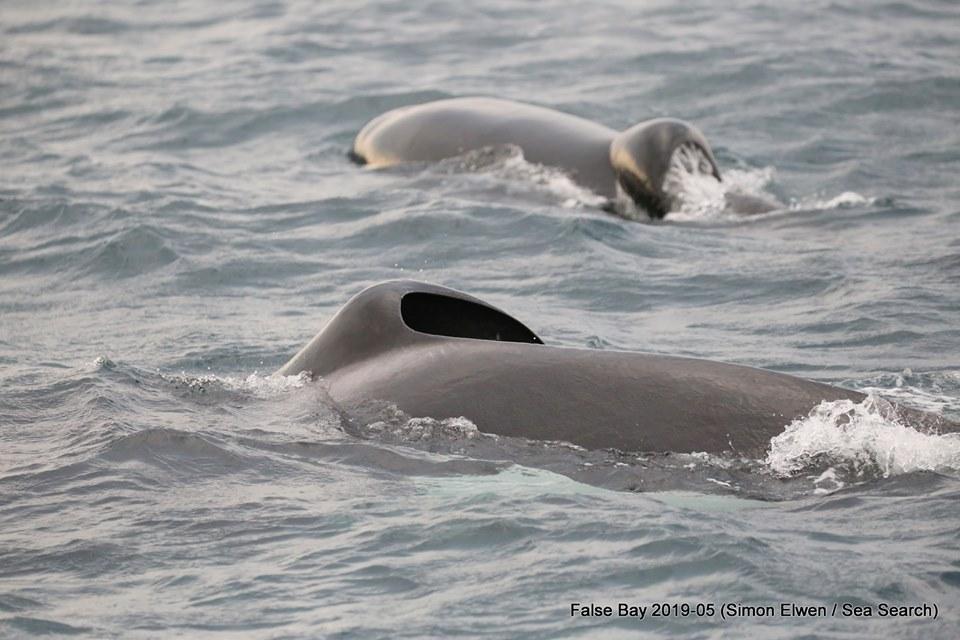
Why are their dorsal fins collapsed like this in the wild?
Possible explanation by Sea Search
- "we're not really sure" is the simple answer. But it does happen in the wild as well as captivity. The paper linked to above is one of the most recent and thorough reviews of the situation and the key point they make is this. ---- "While still rare in nature, this incident is more common (at least 101 known cases) and widespread (geographically and in species diversity) than hypothesized, and is not confined only to animals in captive environments. An investigation into the occurrence of bent fins may be an interesting avenue of research."
It is our assumption that this could be the paper being referred to:
The incidence of bent dorsal fins in free-ranging cetaceans
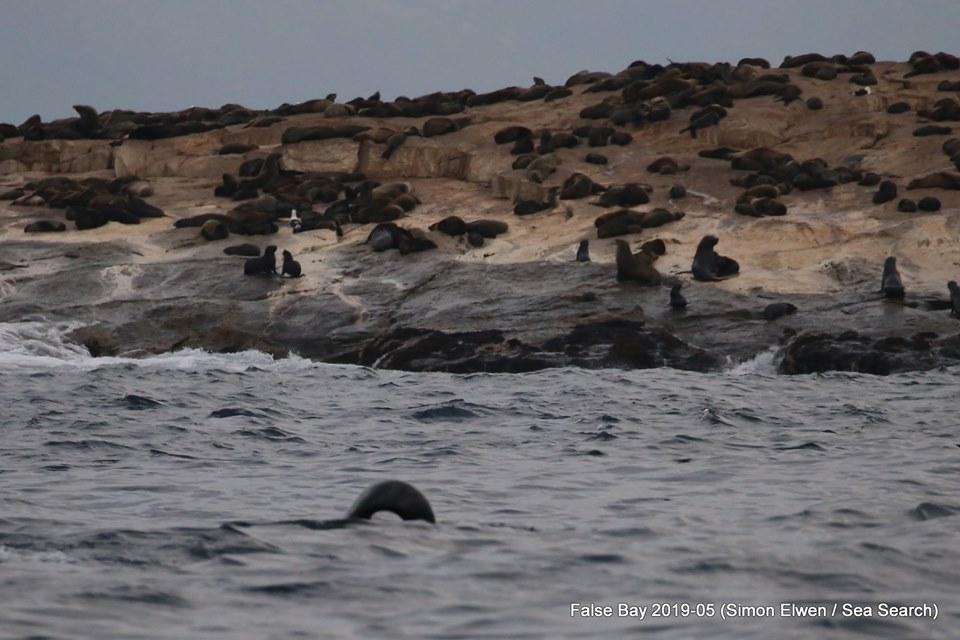
In the 1990s killer whales began targeting sea otters and caused massive population declines in Alaska.
This, in turn, had a knock-on effect as the number of sea urchins (which sea otters eat) exploded. And as sea urchins’ primary food is kelp, this increase resulted in the deforestation of kelp forests in the region.
This killer whale species is fully protected in South African waters through national legislation – Marine Living Resources Act, 1998 (Act No. 18 of 1998).
Source
Article originally appeared first appeared in Business Insider
Sea Search: Scientist unknown
(info curated verbatim from social media posts)
(info curated verbatim from social media posts)
Photo Credits (unless otherwise stated): Simon's Town Boat Company
Call us and schedule your listing today! Contact Us
Copyright © 2025 Hermanus Online Magazine. Web Development by Jaydee media.

